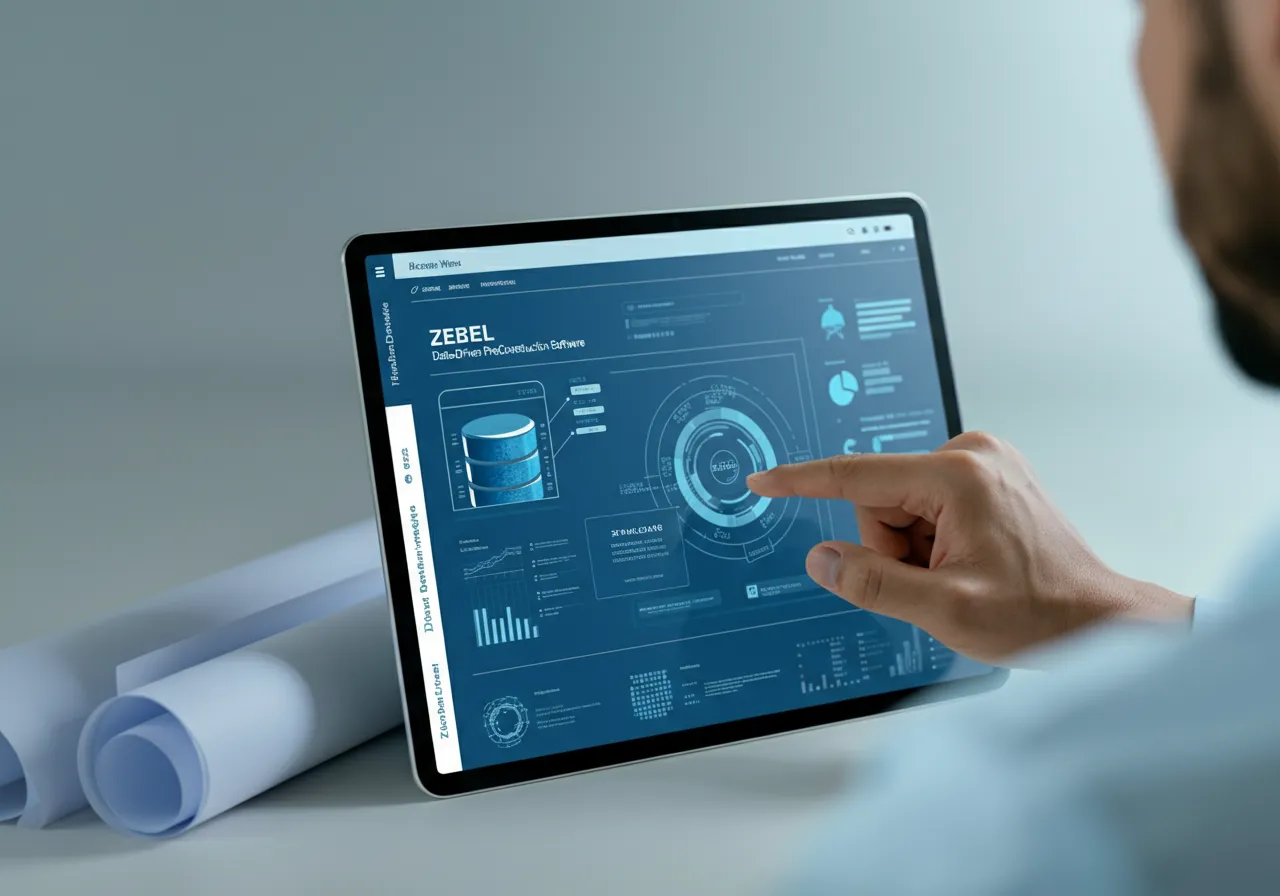Table of Contents
Construction estimating is one of the most critical, and often overlooked, phases of the construction lifecycle. It’s not just about calculating how much concrete you’ll need or what it will cost to install HVAC. It’s a strategic process that directly impacts a project’s profitability, timeline, and overall success.
If you’re a contractor, project manager, estimator, or construction business owner, mastering your estimating process isn’t optional. It’s your competitive edge.
In this guide, we’re breaking down everything you need to know about construction estimating, from the core principles and estimating workflows to the latest tech tools and best practices used by top-performing construction teams.
Whether you’re preparing your first bid or optimizing your company’s estimating department, this ultimate guide will walk you through each step with clarity, depth, and actionable insights.
What is Construction Estimating?
Construction estimating is the process of forecasting project costs and resources needed for a construction project. From understanding material requirements to accounting for labor and equipment expenses, estimating lays the groundwork for determining project feasibility, securing bids, and keeping budgets on track.
With precise estimates, business professionals can make informed decisions, achieve better project outcomes, and ensure profitability.
For a more efficient and accurate approach to construction estimating, Zebel.io offers specialized software that helps general contractors streamline their estimating process. With features designed to improve accuracy and save time, Zebel.io is an excellent tool for managing project costs and resources. Discover how it can enhance your estimating process here: General Contractor Estimating Software.
Why Construction Cost Estimating Is the Backbone of Every Successful Construction Project
At its core, construction estimating is about forecasting costs accurately and consistently. A great estimate can win you the job. A bad one can destroy your profit margin or your reputation.
A High-Quality Estimate Helps You:
- Win More Bids: Accurate pricing makes you more competitive without undercutting profitability.
- Improve Cash Flow Forecasting: With realistic cost breakdowns, you can better manage budgets and secure financing.
- Build Client Trust: Detailed estimates reduce surprises, change orders, and conflict.
- Optimize Resource Planning: From labor hours to material delivery schedules, a solid estimate drives everything downstream.
Yet, accurate construction estimates are not just about numbers. They’re about judgment, experience, and data-driven forecasting. A skilled estimator can look at a set of blueprints and identify cost risks before a shovel hits the ground.
What You’ll Learn in This Guide
This isn’t a generic overview. This is a deep dive into the entire construction estimating process.
You’ll learn:
- The different types of construction estimates (and when to use each)
- A step-by-step estimating process, from takeoff to markup
- How software tools can streamline your workflow
- Tips to avoid common estimating mistakes that lead to lost profits
- How to tailor your estimating process for different project types (residential, commercial, infrastructure)
- Best practices and industry standards to make you more efficient and accurate
Who Should Read This Guide?
This guide is designed to help both individual professionals and construction teams who are responsible for project pricing and cost control, including:
- General Contractors: Looking to tighten bids and reduce risk
- Estimators: Wanting to streamline workflows with proven techniques and software
- Project Managers: Who need visibility into budgeting and forecasting
- Subcontractors: Needing accurate scopes and quantity takeoffs
- Construction Business Owners: Who want to scale operations without increasing risk
Whether you’re a seasoned estimator or just getting started, this guide is your blueprint for building smarter, more profitable projects.
Types of Construction Estimates: From Concept to Contract
Not all construction estimates are created equal. Depending on the project stage, the available documentation, and your client’s needs, you’ll use different types of estimates to guide decisions and secure approvals.
In this section, we’ll explore the main categories of construction estimates, when to use them, and how they fit into the larger preconstruction planning process.
What Are the Main Types of Construction Estimates?
Construction estimating typically falls into five major categories:
- Preliminary Estimates
- Detailed Estimates
- Quantity-Based (Unit Cost) Estimates
- Assembly or Systems Estimates
- Definitive Bid Estimates
Let’s break these down.
1. Preliminary or Conceptual Estimates
These are early-stage ballpark figures, often used before detailed plans are available. Also called order-of-magnitude or feasibility estimates, conceptual estimates help developers and stakeholders determine whether a project is viable.
Use Cases:
- Pre-design or schematic phase
- Early client discussions
- Budgeting for feasibility studies
Accuracy Range: ±20% to ±50%
Common Techniques:
- Cost per square foot
- Historical data from similar projects
- Zebel’s conceptual estimating tools
2. Detailed Estimates (Definitive Estimates)
This is where the heavy lifting begins. Detailed estimates are used for actual project bidding or budgeting once construction documents are nearly complete.
Use Cases:
- Competitive bidding (GCs and subs)
- Budget control during procurement
- Owner presentations and funding approvals
Accuracy Range: ±5% to ±15%
Includes:
- Line-item material and labor
- Equipment and subcontractor quotes
- Overhead, markup, contingency
Detailed estimates form the basis of your construction contract, so accuracy is critical.
3. Unit Cost Estimates (Quantity-Based)
These are widely used in both preliminary and detailed phases. Estimators assign a cost per unit (e.g., $/SF, $/LF, $/CY) and multiply it by the takeoff quantities.
Use Cases:
- Rapid cost assessments
- Spreadsheet-based workflows
- Estimating repetitive work or standard assemblies
Examples:
- $110/SF for framing labor
- $30/LF for PVC piping
- $5/SF for drywall installation
4. Assembly or Systems Estimates
Rather than break everything into single line items, assembly estimates group components by system (e.g., electrical, HVAC, roofing).
Use Cases:
- Design-build firms
- Budgeting with incomplete drawings
- High-level pricing during early design
Benefits:
- Saves time while maintaining moderate accuracy
- Aligns well with trades and scopes
- Useful for renovations and retrofits
5. Bid Estimates (Competitive Bidding)
Bid estimates are submitted to owners or GCs to win contracts. They include detailed costs, markups, and may be broken into base bids and alternates.
Use Cases:
- Public or private project tenders
- GC-to-subcontractor scope bids
- Lump sum and guaranteed maximum price (GMP) contracts
Best Practices:
- Double-check scope coverage
- Ensure pricing reflects current market conditions
- Leave room for risk and profit
Bonus: Budget Estimates
While not a distinct type, budget estimates are hybrids used during design development or funding stages. They’re updated continuously and help align scope with budget as project plans evolve.
Choosing the Right Estimate at the Right Time
Here’s a quick reference guide:
|
Project Phase |
Description |
Estimate Type |
Accuracy |
|
Concept / Feasibility |
Early project evaluation |
Preliminary / Order-of-Magnitude |
±30% |
|
Schematic Design |
Initial design concepts |
Assembly / Unit Cost |
±20% |
|
Design Development |
Refinement of design |
Detailed / Budget |
±10% |
|
Construction Documents |
Finalized construction plans |
Definitive / Bid |
±5% |
The Construction Estimating Process: Step-by-Step
Creating a construction estimate isn’t a one-click operation—it’s a multi-stage process that requires accuracy, organization, and the right tools.
Whether you’re building a commercial tower or bidding on a residential renovation, following a consistent estimating process ensures you cover all your bases and produce competitive, profitable bids.
In this section, we’ll show you how to estimate construction costs in eight steps, from reviewing the project scope to submitting your final proposal.
Step 1: Review the Project Scope and Documentation
Before you crunch any numbers, understand the scope of work. This involves more than just skimming blueprints. It’s about interpreting every aspect of the project—including what’s included, what’s excluded, and what might change. Look for surprises in building materials, labor costs, and site conditions.
Key Documents to Review:
- Architectural drawings and engineering plans
- Specifications and materials lists
- Addenda and change requests
- Site conditions and constraints
Pro Tip: Create a scope checklist and review it with your team and subcontractors to ensure full alignment.
Step 2: Perform a Quantity Takeoff (QTO)
The quantity takeoff is the heart of the estimating process. It involves measuring all physical components of a project—concrete, steel, drywall, insulation, roofing, electrical fixtures, and more. The goal is to determine the quantity and cost of each item needed to complete the project.
To ensure accuracy, it’s important to have a detailed set of plans and specifications as well as an organized method for tracking measurements and calculations. Some common methods for performing a QTO include manual takeoffs using paper plans, digital takeoffs using software or on-screen measuring tools, and 3D modeling.
Each method has its own advantages and challenges, so it’s important to choose the most suitable approach for each project.
Tools to Use:
- Manual takeoff (paper plans + scale ruler)
- Digital takeoff tools
Tips for Accurate Takeoffs:
- Use consistent units of measure
- Double-check scaling and page accuracy
- Account for waste, overlaps, and complex shapes
Every quantity you pull feeds into your cost calculation, so accuracy here saves thousands later.
Step 3: Determine Unit Costs
Once quantities are set, it’s time to assign unit costs to every item. These costs will vary depending on the project and what materials are being used. The best way to determine unit costs is by researching current market prices for the materials needed.
Unit costs include:
- Labor costs (hourly rates, crew sizes, productivity rates)
- Material costs (supplier quotes, market rates, delivery fees)
- Equipment costs (rental rates, fuel, wear-and-tear)
Use updated cost databases from platforms like Zebel, historical job data, or live supplier pricing for maximum accuracy.
Example:
- 1,200 SF of drywall @ $1.90/SF installed = $2,280
Step 4: Add Indirect Costs and Overhead
Direct costs are just the beginning. Indirect costs are expenses not tied to a single line item, but still essential to the job.
Typical Indirect Costs Include:
- Permits and inspections
- Temporary utilities or fencing
- Supervision and site security
- Insurance and bonding
Also factor in company overhead—office rent, admin salaries, software subscriptions, etc., as a percentage of total project cost.
Step 5: Factor in Contingencies and Risk Buffers
No estimate is complete without contingencies. These are your safety nets against scope creep, design changes, or price fluctuations. A common practice is to add 10-20% on top of your total estimate for these factors.
Another important consideration is risk management. Identifying potential risks and creating a plan to mitigate them can save you time, money, and headaches down the road. Some common risks in construction projects include inclement weather, material delays, and unforeseen site conditions.
Recommended Contingency Range:
- 5–10% for design/build
- 10–15% for projects with unknowns or early-stage designs
Think of this as your built-in flexibility to handle surprises, without losing profitability.
Step 6: Apply Profit Markup
It’s a business, so don’t forget to get paid. After totaling all costs, apply your markup to account for profit and competitive pricing strategy.
Markup Strategies:
- Flat % markup (e.g., 15% of total cost)
- Sliding scale based on project size or complexity
- Adjust based on bid competitiveness
Many estimators also factor in negotiation room or bid strategy adjustments at this stage.
Step 7: Assemble the Final Estimate
Compile all your data into a professional, easy-to-read format. Most estimates include:
- Scope summary
- Detailed line items with quantities and unit costs
- Subtotals for labor, materials, equipment
- Indirect costs, contingency, and profit
- Total estimated project cost
Pro Tip: Use estimating software with templated outputs to standardize your reports and save time.
Step 8: Review, Validate, and Submit
Before sending your estimate out the door, double-check everything:
- Did you include all scope items?
- Are takeoff numbers accurate?
- Do unit costs reflect current market rates?
- Has your markup been correctly applied?
Have a second pair of eyes (project manager, senior estimator, or peer) review the estimate before submission.
Streamline These Steps With Estimating Software
Modern estimating platforms can automate key tasks like takeoffs, cost calculations, and final bid formatting. They also help teams collaborate in real-time, reducing miscommunication and improving estimate accuracy
Key Tools and Software for Construction Estimating
In today’s construction industry, speed and accuracy aren’t just nice to have—they’re essential. Manual spreadsheets and paper takeoffs simply can’t keep up with the complexity and pace of modern projects.
That’s where construction estimating software comes in. These platforms streamline everything from takeoffs and cost calculations to bid generation and collaboration, making your estimates faster, more accurate, and more scalable.
Why Use Estimating Software?
Here’s what the best tools offer:
- Automated takeoffs with digital blueprints
- Real-time pricing data (materials, labor, equipment)
- Historical cost tracking and benchmarking
- Multi-user collaboration for large estimating teams
- Template-driven workflows for repeatable project types
- One-click proposal generation for professional submissions
By reducing human error and saving hours of manual work, these tools increase both your bid hit rate and profitability.
What to Look for When Choosing Estimating Software
Not all platforms are the same. When evaluating tools, consider:
|
Feature |
Why It Matters |
|
Cloud Access |
Enables remote teams and real-time updates |
|
Integrated Takeoffs |
Reduces errors and speeds up workflows |
|
Cost Database Integration |
Ensures pricing accuracy and market alignment |
|
Template Support |
Saves time for repeatable scopes |
|
User Permissions |
Essential for large teams and subcontractor input |
|
Reporting & Exports |
Makes sharing with clients and GCs seamless |
ROI of Estimating Software: It Pays for Itself
Still on the fence? Here’s a breakdown of how estimating tools generate ROI:
- Save 5–15 hours per estimate
- Reuse templates for similar projects
- Reduce bid errors by up to 90%
- Win more work with faster, cleaner proposals
Most construction businesses recoup their software investment within the first few projects.
Estimating Best Practices for Accuracy and Profitability
Even with the best software and a solid process, poor habits can still lead to inaccurate bids, scope gaps, and lost profits. That’s why top-performing construction firms follow a set of time-tested estimating best practices to drive consistency, reduce errors, and increase win rates.
This section dives into the key habits and tactics that separate average estimators from the elite, from data tracking to cross-team collaboration.
1. Standardize Your Estimating Process
Consistency is the foundation of accuracy. Establish and document a repeatable estimating workflow that your entire team follows.
How to Standardize:
- Create SOPs for takeoffs, unit costing, and proposal formats
- Use shared templates and cost databases
- Hold internal estimating reviews for every bid
Why It Matters: Teams that standardize avoid duplication, reduce training time, and produce more reliable bids across the board.
2. Build and Maintain a Cost History Database
Your best pricing insights often come from your own past projects. Tracking actual costs versus estimated costs helps refine future bids.
Track These Elements:
- Labor hours vs. budgeted hours
- Material quantity variances
- Equipment downtime or overuse
- Subcontractor performance and pricing
3. Collaborate Early with the Field and Subcontractors
Don’t estimate in a silo. Involve field supervisors, PMs, and subcontractors early in the estimating phase to improve scope clarity and labor productivity estimates.
Benefits:
- Realistic labor assumptions
- Better scope gap detection
- Stronger subcontractor relationships
Pro Tip: Host a pre-bid walkthrough or scope alignment meeting before finalizing your numbers.
4. Use Checklists to Eliminate Scope Gaps
Missing scope items is one of the biggest causes of underbidding. Use trade-specific or CSI division checklists to catch commonly overlooked items.
Include Things Like:
- Site prep and demo
- Temporary facilities and permits
- Safety measures and fencing
- Mobilization and cleanup
Pro Tip: Run a final checklist review before applying your markup and submitting the proposal.
5. Account for Escalation and Supply Chain Volatility
In today’s market, material costs and lead times can shift quickly. Make sure your estimates reflect real-time supplier pricing and potential escalation risks.
Strategies to Manage Risk:
- Include escalation clauses in your bid proposals
- Get multiple supplier quotes for volatile materials
- Stay updated on commodity price trends (e.g., steel, lumber)
6. Align Your Estimate with Project Schedule
Labor and equipment costs are directly impacted by your schedule. Coordinate with the project manager to ensure your pricing matches the realistic timeline.
Check For:
- Weather delays
- Permitting and inspection windows
- Long-lead materials (windows, HVAC units, etc.)
A tight estimate with an unrealistic timeline can be a silent profit killer.
7. Perform a Final Peer Review
Before you hit “send” on any proposal, do a peer review or red team check.
Review For:
- Math errors
- Double-counted or missing items
- Uncovered scope or RFIs
- Logical inconsistencies in labor productivity
This extra step often catches small mistakes that can lead to major financial losses if overlooked.
Costly Mistakes to Avoid in Construction Estimating (and How to Mitigate Them)
While there are many things to keep in mind when creating a construction estimate, here are five key mistakes that you should avoid:
Underestimating Labor Productivity
One of the most common mistakes is relying on overly optimistic projections when calculating labor productivity. Labor efficiency can vary greatly depending on project complexity, worker skill levels, and environmental factors.
To mitigate this, estimates should be based on historical performance data from similar projects, adjusted for current conditions. Additionally, incorporating buffer times for potential slowdowns or unforeseen delays ensures a more realistic outlook.
Failing to Account for Change Orders
Assuming there will be no change orders during the course of the project is an unrealistic and risky approach. Changes often occur due to client requests, design adjustments, or unforeseen circumstances onsite.
To prevent financial strain, always include a contingency budget in your estimate to account for potential changes. This proactive step safeguards both the project’s profitability and stakeholder relationships.
Overlooking Site-Specific Challenges
Each site brings unique factors that must be considered in the estimating process. For instance, terrain conditions may impact excavation and foundation work, while limited site access could delay the movement of materials and equipment. Additionally, regions with extreme weather or strict regulatory codes can result in increased costs.
Thorough site assessments and consultations with local experts should be integrated into your estimating process to identify and address these variables.
Misjudging Material Costs and Availability
Changes in material prices and supply chain disruptions can greatly affect project costs. Not staying updated on current market trends may lead to significant budget overruns.
It’s essential to seek quotes from reliable suppliers, establish strategic relationships, and consider locking in prices through contracts when possible. Factoring in material lead times also reduces the risk of project delays.
Neglecting Indirect Costs
Many estimators focus heavily on direct costs like materials and labor, while indirect costs—such as permits, insurance, equipment maintenance, and administrative expenses—may be underestimated or excluded entirely. Overlooking these costs can jeopardize the project’s financial viability.
To avoid this, ensure that all indirect expenses are systematically identified and accurately integrated into your estimate.
The Role of Estimating in the Construction Lifecycle
Construction estimating doesn’t exist in a vacuum. It’s the foundation of everything that follows. A well-built estimate influences the project’s budget, schedule, procurement strategy, and even client relationships.
In this section, we’ll show how estimating intersects with key phases of the construction lifecycle, and why early accuracy and collaboration are critical to delivering successful projects.
Estimating During Preconstruction
In the preconstruction phase, the estimate is a living document. It evolves alongside the design, helping the team make smarter decisions before a single shovel hits the ground.
Key Contributions of Estimating in Precon:
- Budget alignment with conceptual design
- Value engineering options for cost savings
- Feasibility assessments and funding decisions
- Trade scoping and bid packaging strategies
Estimators collaborate with architects, engineers, and owners to shape a buildable, financially viable project.
Estimating and Project Scheduling
A solid estimate informs the schedule—and vice versa. If the labor productivity rates or equipment durations are off, your schedule will crumble under pressure.
How Estimating Affects Scheduling:
- Determines crew sizing and daily output assumptions
- Influences duration of critical path activities
- Informs cash flow and progress billing milestones
Pro Tip: Use production-based estimating models to forecast labor hours and sequence work with your PM team.
Estimating and Procurement
Procurement success hinges on early cost clarity. Your estimate helps drive smart buying decisions and subcontractor selection.
Roles Estimators Play in Procurement:
- Setting budget targets for subcontractor bids
- Comparing supplier quotes to original cost assumptions
- Flagging lead times and escalation risks
When estimators and procurement work together, they prevent budget creep and material shortages down the line.
Estimating and Field Execution
Once boots are on the ground, the estimate becomes the baseline for field productivity and cost tracking.
Why the Field Team Relies on the Estimate:
- Labor budgets are used to track daily/weekly performance
- Quantity data feeds layout and material logistics
- Estimates flag long-lead items to avoid delays
Best Practice: Do a handoff meeting between the estimating team and field crews to align expectations and budget assumptions.
Estimating and Project Controls
Estimating feeds directly into project controls and financial reporting. It sets the benchmarks for earned value, cost-to-complete tracking, and variance analysis.
Integrated Estimating Leads To:
- Real-time budget vs. actual comparisons
- Faster change order pricing
- Improved forecasting across project phases
Estimating is the launchpad for the entire cost management process.
Estimating: The Strategic Lever for Profitability
When you zoom out, estimating isn’t just a bidding function. It’s a strategic lever. Accurate estimates:
- Prevent scope creep and budget overruns
- Support better subcontractor and supplier decisions
- Empower project managers with better controls
- Build trust with clients through transparency and precision
By embedding estimating into the full project lifecycle, construction teams create a culture of predictability, accountability, and profitability.
The Future of Construction Estimating
Construction estimating is evolving fast. Where once we relied on paper plans and gut instinct, today’s estimators are leveraging powerful software, cloud platforms, and historical data to bid smarter.
And looking ahead? Emerging tech is poised to revolutionize the estimating process even further.
In this section, we explore the trends and innovations that will shape the next 5–10 years of construction estimating and how your team can stay ahead of the curve.
AI and Machine Learning for Predictive Estimating
AI is rapidly becoming a force multiplier in preconstruction. Platforms are now integrating machine learning to:
- Predict costs based on historical project data
- Recommend optimal crews or equipment based on productivity rates
- Detect scope gaps automatically in drawing sets
- Generate bid-ready proposals in minutes
Real-world impact: Estimators save hours, reduce human error, and make better-informed decisions—all while increasing bid volume.
5D BIM Integration
Building Information Modeling (BIM) has changed how we design buildings. Now, 5D BIM (which adds cost data to 3D models) is changing how we price them.
What 5D BIM Offers:
- Live cost updates as models change
- Clash detection linked to cost implications
- Quantity takeoffs generated directly from the model
- Visual budgeting for client presentations
Firms using 5D BIM report faster estimating cycles and better collaboration between designers, estimators, and project managers.
Cloud-Based Collaboration and Real-Time Data
Construction estimating is becoming more collaborative and connected. Cloud platforms now allow multiple stakeholders—owners, architects, estimators, and PMs—to access and contribute to the same estimate in real time.
Benefits:
- Instant access to the latest pricing and quantity updates
- Smoother design-to-estimate workflows
- Fewer version control errors
- Faster feedback loops between field and office
As remote teams become more common, cloud-based estimating is no longer a nice-to-have; it’s a must.
Data-Driven Decision Making
Estimators are increasingly acting as data analysts, not just number crunchers. The ability to analyze historical performance and market trends is becoming essential for:
- Accurate labor forecasting
- Escalation modeling
- Feasibility studies and ROI assessments
- Strategic bid/no-bid decisions
Pro Tip: Build your own internal cost history database to gain a long-term edge.
Cybersecurity and Data Integrity
As more data lives in the cloud, protecting your estimates becomes critical. Expect estimating software to invest more in:
- Role-based access controls
- Encrypted cost data
- Audit trails for proposal changes
- Cloud backup and disaster recovery
In the future, data security will be as important as data accuracy.
What This Means for Your Estimating Team
To stay competitive in the coming decade, your team will need to:
- Embrace new technologies early
- Invest in skills like data literacy and BIM navigation
- Break down silos between departments
- Shift from reactive bidding to strategic estimating
Firms that evolve will see stronger margins, better project outcomes, and tighter client relationships.
Wrapping Up: Estimating as a Competitive Advantage
Construction estimating is no longer just about “getting the number right.” It’s about creating a repeatable, tech-enabled system that supports smarter decisions across the project lifecycle.
With speed, accuracy, and innovation at the forefront, Zebel ensures that contractors and developers can achieve their project goals with precision and efficiency.
Start streamlining your construction estimating process today with Zebel.
Book a demo today and harness the power of data-driven estimates and stay ahead in an evolving industry.
Frequently Asked Questions
Is construction estimating hard to learn?
Learning construction estimating can be challenging at first, but it becomes much more manageable with the right tools and resources. Professionals can quickly develop accurate and efficient estimates by understanding key concepts and leveraging modern software.
What is the top salary of a construction estimator?
The top salary of a construction estimator can vary depending on experience, location, and industry demand, but it typically ranges between $90,000 and $120,000 annually, with highly experienced professionals earning even more.
What is the most common way for contractors to estimate costs?
The most common method for contractors to estimate costs involves creating detailed cost breakdowns based on materials, labor, equipment, and overhead expenses. This approach often integrates historical data, spreadsheets, and specialized estimating software to ensure accuracy and efficiency.







